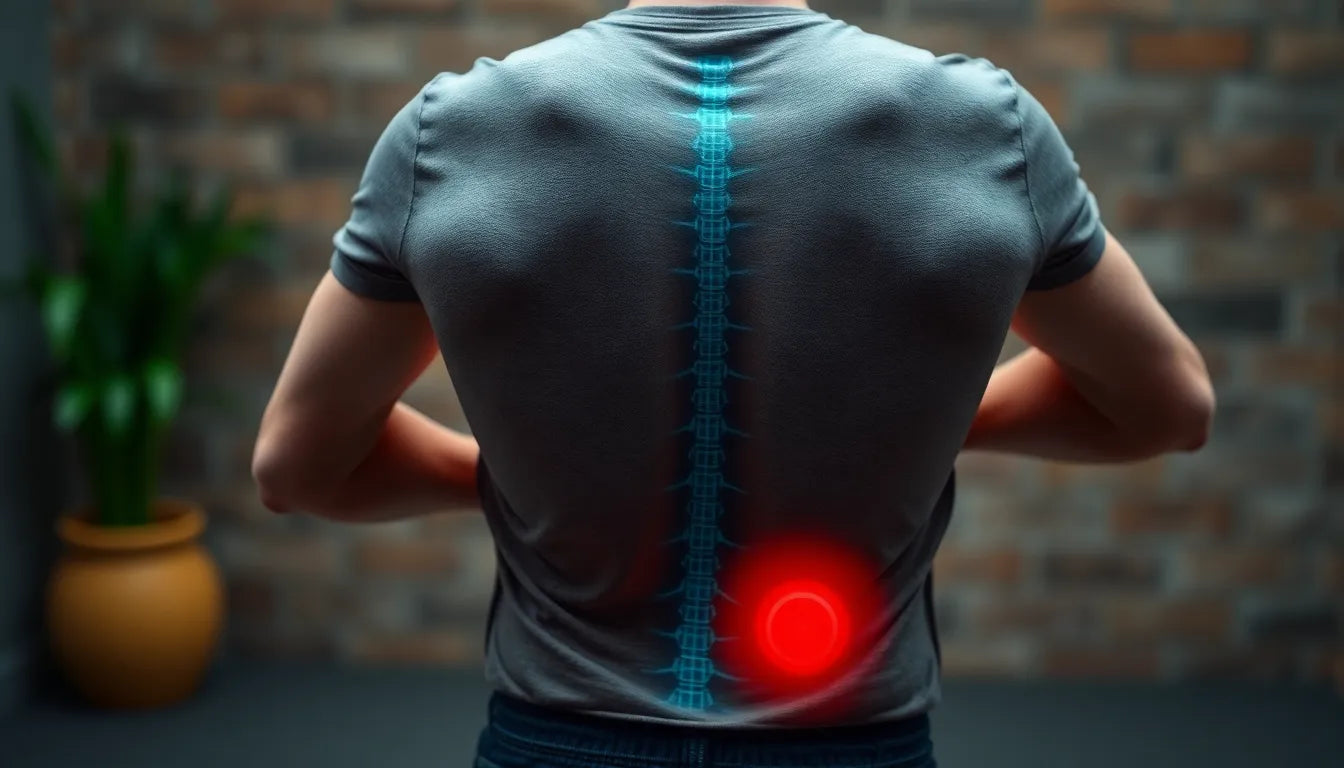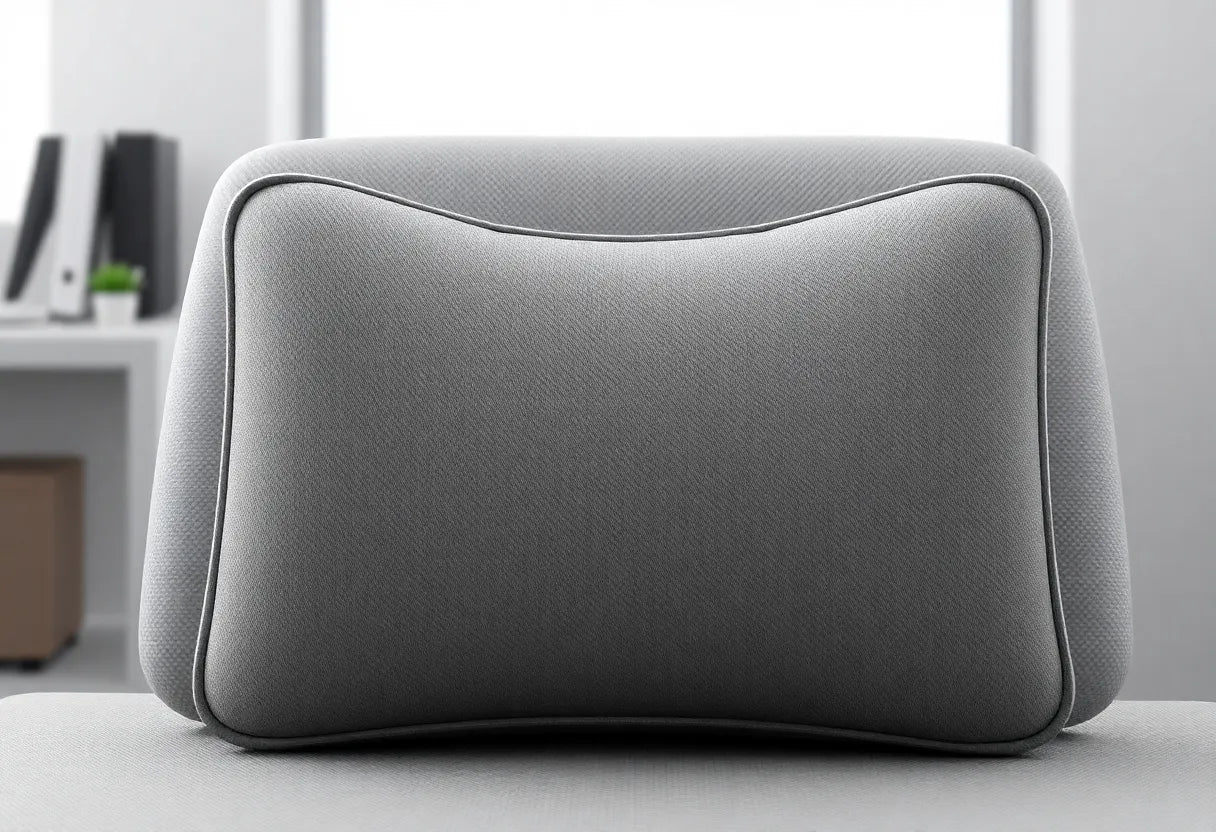Back pain when bending forward is a common issue that many people experience at some point in their lives. This particular type of pain can significantly impact daily activities, making even simple tasks like tying your shoes or picking up objects a challenge. Addressing this problem is crucial, as it can affect your overall quality of life and hinder your ability to perform routine tasks comfortably. If you're searching for answers, you're likely looking for the causes, management strategies, and relief options for this specific type of back pain.
Why bending forward causes pain
Bending forward is an everyday movement, whether you're reaching for something under the table or simply stretching. Because it's such a frequent action, any discomfort or pain in this position becomes more noticeable and concerning. Several potential causes could be behind this pain. Muscle spasms are a common culprit, often resulting from factors like dehydration, stress, or sudden changes in physical activity. Another frequent cause is herniated discs, which can occur when the soft cushion of tissue between the bones in your spine pushes out. Poor posture, especially when sitting for extended periods, can also contribute to discomfort when bending forward.

Lumbar support belt
Provides support and relief for lower back pain, ideal for lumbar discomfort and herniated discs.
Understanding these causes is the first step toward finding relief. Recognizing the specific reason behind your pain can help you take appropriate actions to alleviate it and prevent it from recurring.
Setting the stage for solutions
As we delve deeper into this topic, we will explore practical tips and strategies that can help you manage and relieve back pain when bending forward. From identifying the underlying causes and symptoms to exploring at-home relief strategies and when to seek professional help, the upcoming sections will cover everything you need to know. Whether your pain is due to muscle strain, spinal issues, or poor posture, there are actionable steps you can take to find relief and prevent future episodes.
Stay tuned for more in-depth information on how to tackle this common issue and improve your overall well-being. By understanding the root causes and implementing effective strategies, you can regain comfort and mobility in your daily activities.
identifying causes and symptoms of back pain when bending forward
When it comes to understanding the root causes of back pain experienced during forward bending, it's crucial to delve into the specifics of muscle strain and tension, as well as spinal and nerve issues. These are often the primary culprits behind the discomfort that many people face.
muscle strain and tension
Muscle strain and tension are common contributors to back pain when bending forward. Factors such as dehydration, stress, or sudden changes in physical activity can lead to muscle spasms. These spasms occur when muscles contract involuntarily, causing significant discomfort. It's important to differentiate between sharp pain, which may indicate an acute injury, and a dull ache, which often suggests muscle fatigue. Sharp pain should be taken seriously, as it might point to a more severe issue requiring immediate attention.
spinal and nerve issues
Spinal and nerve issues are another major category of causes for back pain during forward bending. Herniated discs, for instance, can exert pressure on nerve roots, leading to significant pain. Conditions such as sciatica, spondylolisthesis, and arthritis are also known contributors. Sciatica, in particular, involves pain that radiates along the path of the sciatic nerve, affecting the lower back and legs. Spondylolisthesis refers to the slippage of one vertebra over another, while arthritis can lead to inflammation and stiffness in the joints, exacerbating pain when bending forward.
when to seek professional help for bending forward back pain
Understanding when to seek professional help for back pain is crucial for effective management and recovery. Monitoring pain patterns and associated symptoms like tingling or numbness is essential. If the pain worsens or is accompanied by neurological symptoms, it's advisable to consult a healthcare professional for a thorough evaluation.
symptom tracking
Tracking symptoms over time can provide valuable insights into the nature of your back pain. Note any changes in intensity, duration, or triggers. If you experience symptoms such as tingling, numbness, or weakness in the legs, these may indicate nerve involvement, which requires professional assessment. Early intervention can prevent the progression of potential chronic issues.
professional assessment
Professional assessment plays a vital role in diagnosing and treating back pain. Physical therapists and healthcare providers can perform comprehensive evaluations to identify the underlying causes of your pain. They can also recommend tailored treatment plans, including exercises, stretches, and lifestyle modifications, to alleviate discomfort and promote healing.
at-home relief strategies for back pain
While professional help is important, there are several at-home strategies you can implement to manage and relieve back pain when bending forward. These methods focus on immediate relief and long-term prevention.
basic home management
For immediate relief, consider using ice or heat therapy. Applying ice packs can reduce inflammation and numb the area, while heat therapy can relax tense muscles and improve blood circulation. Over-the-counter nonsteroidal anti-inflammatory drugs (NSAIDs) can also provide temporary pain relief. However, it's important to use these medications as directed and consult a healthcare professional if needed.
Gradually returning to activity is crucial to avoid further strain. Rest is important, but prolonged inactivity can lead to muscle stiffness and weakness. Engage in gentle movements and stretches to maintain flexibility and strength.
posture and ergonomics
Poor posture and prolonged sitting are significant contributors to back pain. Ensuring proper posture while sitting and standing can alleviate strain on the spine. Consider ergonomic adjustments in your workspace, such as using a supportive chair and maintaining a neutral spine position. These changes can significantly reduce the risk of back pain when bending forward.

Men's Posture Shirt™ - White
Patented shirt with NeuroBand™ technology for postural correction, pain relief, and muscle stimulation.
By understanding the causes and symptoms of back pain, knowing when to seek professional help, and implementing effective at-home strategies, you can take proactive steps toward relieving discomfort and improving your overall well-being. In the next section, we will explore lifestyle and prevention tips to further support your journey to a pain-free life.
Lifestyle and prevention tips for back pain when bending forward
Maintaining a healthy lifestyle and incorporating preventive measures can significantly reduce the risk of experiencing back pain when bending forward. By focusing on regular exercise, ergonomic practices, and overall wellness, you can support your spine and enhance your quality of life.
Exercise and movement
Regular exercise is essential for strengthening the core muscles that support the spine. Engaging in activities like yoga, pilates, or simple core exercises can help improve flexibility, balance, and strength. These exercises not only support the spine but also promote better posture, reducing the likelihood of back pain. Additionally, incorporating gentle stretching into your daily routine can alleviate muscle tension and prevent stiffness.
It's important to stay active throughout the day, especially if you have a sedentary lifestyle. Taking short breaks to move around and stretch can prevent muscle fatigue and improve circulation. Remember that consistency is key, so aim to incorporate these exercises into your routine regularly for the best results.
Ergonomic practices
Improving your workplace ergonomics can play a crucial role in preventing back pain. Start by ensuring your desk setup is optimal: your computer screen should be at eye level, and your chair should provide adequate lumbar support. Consider using ergonomic aids such as lumbar cushions or sit-stand desks to promote better posture and reduce strain on your back.
Maintaining a healthy weight is also important, as excess weight can put additional pressure on the spine. A balanced diet and regular physical activity can help you achieve and maintain a healthy weight, further supporting your back health.
By integrating these lifestyle and prevention tips into your daily routine, you can effectively manage and reduce the risk of back pain when bending forward. Taking proactive steps to support your spine and overall well-being can lead to a more comfortable and active life.
Frequently Asked Questions
What are the most common causes of back pain when bending forward?
Muscle strain, herniated discs, and poor posture are frequent culprits of back pain when bending forward. These issues can arise from sudden movements, prolonged sitting, or improper lifting techniques.
How can I tell if my back pain is serious?
If you experience severe pain, numbness, or tingling, it's important to consult a healthcare professional. These symptoms may indicate a more serious underlying condition that requires medical attention.
What are some effective at-home treatments for back pain?
At-home treatments include ice/heat therapy, over-the-counter pain relievers, and gentle stretching exercises. These methods can provide temporary relief and help manage pain effectively.
Should I see a doctor for back pain when bending forward?
If your back pain persists, worsens, or is accompanied by other symptoms such as tingling or numbness, it's advisable to seek medical advice to determine the underlying cause and appropriate treatment.
How can ergonomic aids help with back pain?
Ergonomic aids, such as lumbar supports and sit-stand desks, can improve posture and reduce strain on the back. These tools help maintain a neutral spine position and promote better alignment, which can alleviate discomfort and prevent future pain episodes.
Källor
- "Understanding the Impact of Forward Bending on Back Pain." National Center for Biotechnology Information.
- "Posture and Pain: The Role of Ergonomics in Preventing Discomfort." Journal of Orthopaedic & Sports Physical Therapy.
- "Muscle Strain and Its Effects on Back Pain." National Center for Biotechnology Information.
- "Why Does My Back Hurt When I Bend Over?" Neuroscience Group.
- "Lower Back Pain: Causes and Treatments." Cleveland Clinic.
- "The Back Exam: Stanford Medicine 25." Stanford Medicine.
- "Bending and Back Pain: What You Need to Know." City Physiotherapy.























